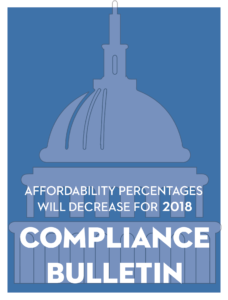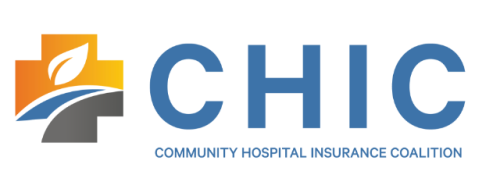PCORI Fees Due By July 31, 2017
Affordability Percentages Will Decrease for 2018
ACA Overview: What if the Employer Mandate Is repealed?
Pre-existing Conditions Under the ACA
Did you know? Wellness Incentives
PCORI Fees Due By July 31, 2017
by Peter Marathas or Stacy Barrow Marathas Barrow Weatherhead Lent LLP
Employers that sponsor self-insured group health plans, including health reimbursement arrangements (HRAs) should keep in mind the upcoming July 31, 2017 deadline for paying fees that fund the Patient-Centered Outcomes Research Institute (PCORI). As background, the PCORI was established as part of the Affordable Care Act (ACA) to conduct research to evaluate the effectiveness of medical treatments, procedures and strategies that treat, manage, diagnose or prevent illness or injury. Under the ACA, most employer sponsors and insurers will be required to pay PCORI fees until 2019.
The amount of PCORI fees due by employer sponsors and insurers is based upon the number of covered lives under each “applicable self-insured health plan” and “specified health insurance policy” (as defined by regulations) and the plan or policy year end date.
- For plan years that ended between January 1, 2016 and September 30, 2016, the fee is $2.17 per covered life and is due by July 31, 2017.
- For plan years that ended between October 1, 2016 and December 31, 2016, the fee is $2.26 per covered life and is due by July 31, 2017
For example, a plan year that ran from October 1, 2015 through September 30, 2016 will pay a fee of $2.17 per covered life. Calendar year 2016 plans will pay a fee of $2.26 per covered life.
NOTE: The insurance carrier is responsible for paying the PCORI fee on behalf of a fully insured plan. The employer is responsible for paying the fee on behalf of a self-insured plan, including an HRA. In general, health FSAs are not subject to the PCORI fee.
Employers that sponsor self-insured group health plans must report and pay PCORI fees using IRS Form 720, Quarterly Federal Excise Tax Return.
Note that because the PCORI fee is assessed on the plan sponsor of a self-insured plan, it generally should not be included in the premium equivalent rate that is developed for self-insured plans if the plan includes employee contributions. However, an employer’s payment of PCORI fees is tax deductible as an ordinary and necessary business expense.
Historical Information for Prior Years
- For plan years that ended between October 1, 2015 and December 31, 2015, the fee was $2.17 per covered life and was due by August 1, 2016.
- For plan years that ended between January 1, 2015 and September 30, 2015, the fee was $2.08 per covered life and was due by August 1, 2016.
- For plan years that ended between October 1, 2014 and December 31, 2014, the fee was $2.08 per covered life and was due by July 31, 2015.
- For plan years that ended between January 1, 2014 and September 30, 2014, the fee was $2 per covered life and was due by July 31, 2015.
- For plan years that ended between October 1, 2013 and December 31, 2013, the fee was $2 per covered life and was due by July 31, 2014.
- For plan years that ended between January 1, 2013 and September 30, 2013, the fee was $1 per covered life and was due by July 31, 2014.
- For plan years that ended between October 1, 2012 and December 31, 2012, the fee was $1 per covered life and was due by July 31, 2013.
Counting Methods for Self-Insured Plans
Plan sponsors may choose from three methods when determining the average number of lives covered by their plans.
Actual Count method. Plan sponsors may calculate the sum of the lives covered for each day in the plan year and then divide that sum by the number of days in the year.
Snapshot method. Plan sponsors may calculate the sum of the lives covered on one date in each quarter of the year (or an equal number of dates in each quarter) and then divide that number by the number of days on which a count was made. The number of lives covered on any one day may be determined by counting the actual number of lives covered on that day or by treating those with self-only coverage as one life and those with coverage other than self-only as 2.35 lives (the “Snapshot Factor method”).
Form 5500 method. Sponsors of plans offering self-only coverage may add the number of employees covered at the beginning of the plan year to the number of employees covered at the end of the plan year, in each case as reported on Form 5500, and divide by 2. For plans that offer more than self-only coverage, sponsors may simply add the number of employees covered at the beginning of the plan year to the number of employees covered at the end of the plan year, as reported on Form 5500.
Special rules for HRAs. The plan sponsor of an HRA may treat each participant’s HRA as covering a single covered life for counting purposes, and therefore, the plan sponsor is not required to count any spouse, dependent or other beneficiary of the participant. If the plan sponsor maintains another self-insured health plan with the same plan year, participants in the HRA who also participate in the other self-insured health plan only need to be counted once for purposes of determining the fees applicable to the self-insured plans.
Affordability Percentages Will Decrease for 2018
OVERVIEW
On May 5, 2017, the Internal Revenue Service (IRS) issued Revenue Procedure 2017-36 to index the contribution percentages in 2018 for purposes of determining affordability of an employer’s plan under the Affordable Care Act (ACA). For plan years beginning in 2018, employer-sponsored coverage will be considered affordable if the employee’s required contribution for self-only coverage does not exceed:
- 9.56 percent of the employee’s household income for the year, for purposes of both the pay or play rules and premium tax credit eligibility; and
- 8.05 percent of the employee’s household income for the year, for purposes of an individual mandate exemption (adjusted under separate guidance).
ACTION STEPS
These updated affordability percentages are effective for taxable years and plan years beginning Jan. 1, 2018. This is the first time since these rules were implemented that the affordability contribution percentages have been reduced. As a result, some employers may need to reduce their employee contributions for 2018 to meet the adjusted percentage.
What if the Employer Mandate Is repealed?
The Affordable Care Act (ACA) requires applicable large employers (ALEs) to offer affordable, minimum value health coverage to their full-time employees in order to avoid possible penalties. Because this employer mandate has been criticized as burdensome for employers and an impediment to business growth, it seems likely that its repeal will be part of any Republican plan to repeal and replace the ACA.
If the employer mandate is repealed, many ALEs will likely want to modify their plan designs to go back to pre-ACA eligibility rules (for example, requiring employees to have a 40-hour per week work schedule to be eligible for benefits). Employers may also consider increasing the amount that employees are required to contribute for group health plan coverage.
When making plan design changes, employers should review their compliance obligations under the Employee Retirement Income Security Act (ERISA) and the ACA mandates that may remain intact.
Pre-existing Conditions Under the ACA
The ACA currently protects individuals from being denied coverage due to pre-existing conditions. Specifically, it prohibits both exclusions of coverage of specific benefits and complete exclusions from a plan or coverage based on a pre-existing condition.
The AHCA retains these protections. However, it would allow issuers in states that receive waivers of the community rating rules to charge higher premiums for individuals with pre-existing conditions, in some cases. The AHCA would establish a fund to provide assistance to individuals that have higher premiums due to pre-existing conditions under these circumstances.
HealthSure will keep you updated with any applicable legislative developments.
Generally, wellness incentives are subject to the same federal tax rules as any other employee rewards or prizes.
Cash and cash equivalents (for example, a $100 gift card for taking a health risk assessment) are always taxable.
Another taxable example is an employer’s payment of gym or health club membership fees, unless the membership qualifies as medical care.





